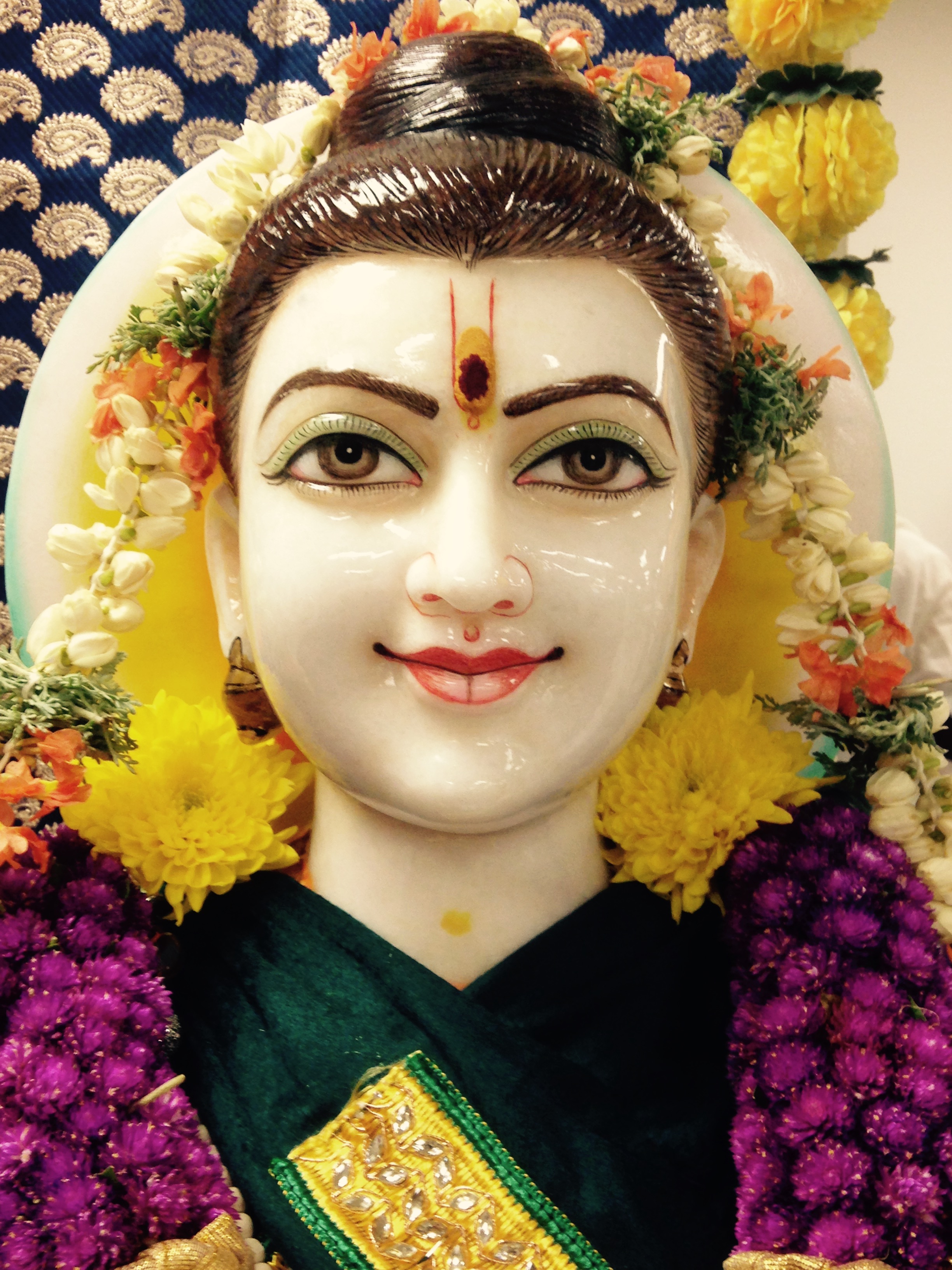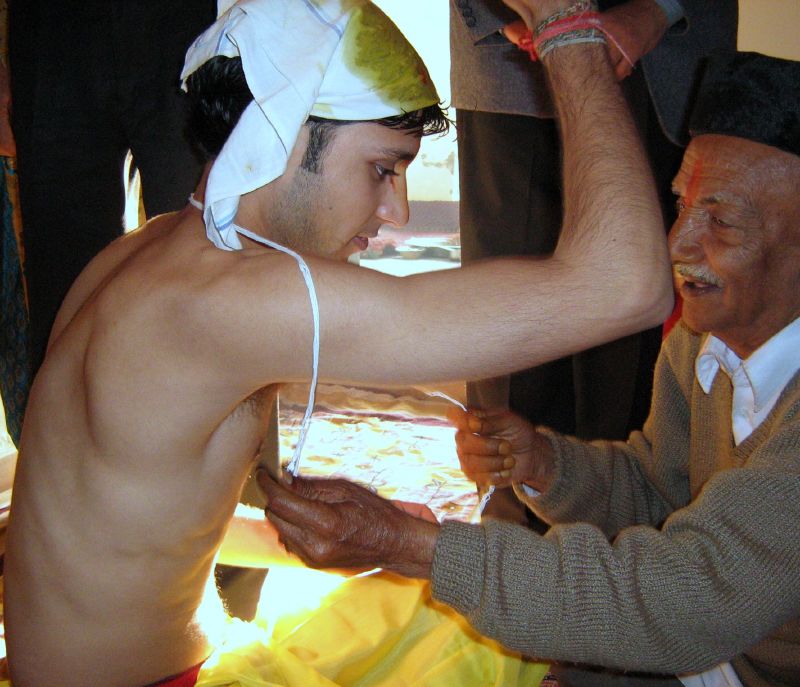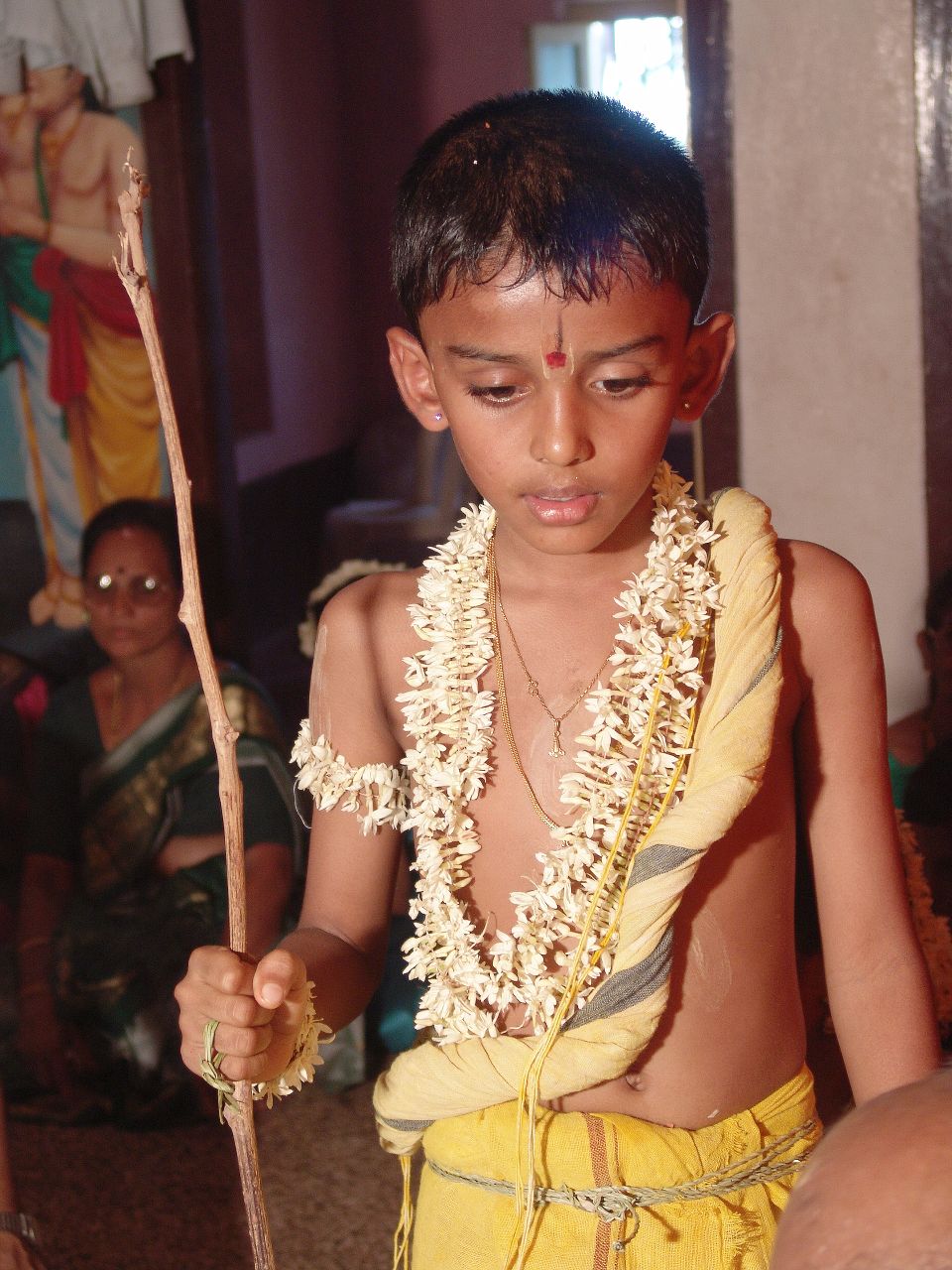|
Narsimha Saraswati
Shree Narasimha Saraswati Swami Or Shree Nrusimha Saraswati Swami (1378−1459) was an Indian guru of Dattatreya tradition(sampradaya). According to the Shri GuruCharitra, he is the second avatar of Dattatreya in ''Kali Yuga'' after Sripada Sri Vallabha. Life Shri Narasimha Saraswati lived from 1378 to 1459 (Shaka 1300 to Shaka 1380). Saraswati was born into a Deshastha Brahmin family in Karanjapura, modern-day Karanja Lad, Lad-Karanja (Karanja) in the Washim district, which is a part of Vidarbha region of Maharashtra, India. His father (Madhava) and his mother (Amba-Bhavani) initially named him Narahari or Shaligramadeva, with the surname Kale. Shri Narasimha Sarswati is considered to be the second incarnation of Dattatreya, the first Incarnation was Sripada Sri Vallabha, Sripada Srivallabha, as per his blessings to Amba Bhavani, in her previous birth, Sripada Srivallabh had blessed her & he advised her to perform shiva pooja. Later he also told that he would be born to h ... [...More Info...] [...Related Items...] OR: [Wikipedia] [Google] [Baidu] |
Karanja Lad
Karanja Lad is a city of a Municipal council in Washim district in the Indian state of Maharashtra. Karanja is also known as Karanja Lad. The town is named after Saint Karanj. It is often also referred as "Lad'anche Karanja" in honor of Muslim Queen(ra) (Daughter of Nawab). Karanja is a holy place for Hindus, Jains, and Muslims. It is the birthplace of Shri Narasimha Saraswati Swami Maharaj, believed to be the second incarnation of Lord Dattatreya.. Demographics As of the 2001 Indian census, Karanja had a population of 100,947. Males made up 52% of the population and females 48%. Karanja has an average literacy rate of 72%, higher than the national average of 59.5%. Male literacy rate is 78%, and female literacy is 67%. Karanja City As per official census 2011 and population data 2019 of Karanja City, Muslims are the majority in Karanja. Total population of Karanja City is 100,947 as per census 2011. Islam constitutes 49.80% of Karanja City population. Hinduism are minority in ... [...More Info...] [...Related Items...] OR: [Wikipedia] [Google] [Baidu] |
SriPada Sri Vallabha
Sripada Srivallabha ( Telugu: శ్రీపాద శ్రీవల్లభ, Tamil: ஸ்ரீபாத ஸ்ரீவல்லபர், Hindi: श्रीपाद श्रीवल्लभ, Kannada: ಶ್ರೀಪಾದ ಶ್ರೀವಲ್ಲಭ, Marathi: श्रीपाद श्रीवल्लभ, Malayalam: ശ്രീപാദ ശ്രീവല്ലഭ) is an Indian guru of the Dattatreya Sampradaya (Lineage) who is regarded as an incarnation of Lord Dattatreya. He is considered as one of the first complete Avatars (incarnations) of the deity Dattatreya in Kali Yuga. Of note, Narasimha Saraswati, Manik Prabhu, Swami Samarth, Shirdi Sai Baba , are believed to be other incarnations of Lord Dattatreya that followed Sripada Srivallabha. Sripada Srivallabha was born and lived in Pithapuram, formerly known as Pitikapuram, a town in present-day Andhra Pradesh in India. The grandparents of Sripada Srivallabha belonged to the Malayadri village of Guntur ... [...More Info...] [...Related Items...] OR: [Wikipedia] [Google] [Baidu] |
Sanyas
''Sannyasa'' (Sanskrit: संन्यास; IAST: ), sometimes spelled Sanyasa (सन्न्यास) or Sanyasi (for the person), is life of renunciation and the fourth stage within the Hindu system of four life stages known as '' Ashramas'', with the first three being Brahmacharya (bachelor student), Grihastha (householder) and Vanaprastha (forest dweller, retired). Sannyasa is traditionally conceptualized for men or women in late years of their life, but young brahmacharis have had the choice to skip the householder and retirement stages, renounce worldly and materialistic pursuits and dedicate their lives to spiritual pursuits. Sannyasa is a form of asceticism, is marked by renunciation of material desires and prejudices, represented by a state of disinterest and detachment from material life, and has the purpose of spending one's life in peaceful, spiritual pursuits. An individual in Sanyasa is known as a ''Sannyasi'' (male) or ''Sannyasini'' (female) in Hind ... [...More Info...] [...Related Items...] OR: [Wikipedia] [Google] [Baidu] |
Upanayan
''Upanayana'' ( sa, उपनयनम्, lit=initiation, translit=Upanāyanam) is a Hindu educational sacrament, one of the traditional saṃskāras or rites of passage that marked the acceptance of a student by a preceptor, such as a ''guru'' or ''acharya'', and an individual's initiation into a school in Hinduism. Some traditions consider the ceremony as a spiritual rebirth for the child or future ''dvija'', twice born. It signifies the acquisition of the knowledge of God and the start of a new and disciplined life as a brahmachari. According to the given community and region, it is also known by numerous terms such as ''janai'' or ''janea'', ''poita/paita'', ''logun/nagun'', y''agnopavita'', ''bratabandha'', ''bratopanayan.'' The ''Upanayanam'' ceremony is arguably the most important rite for the Brahmin male, ensuring his rights and responsibilities as a Brahmin and signifying his advent into adulthood. The tradition is widely discussed in ancient Sanskrit texts of Hinduism ... [...More Info...] [...Related Items...] OR: [Wikipedia] [Google] [Baidu] |
Samādhi
''Samadhi'' (Pali and sa, समाधि), in Buddhism, Hinduism, Jainism, Sikhism and yogic schools, is a state of meditative consciousness. In Buddhism, it is the last of the eight elements of the Noble Eightfold Path. In the Ashtanga Yoga tradition, it is the eighth and final limb identified in the ''Yoga Sutras'' of Patanjali. In the oldest Buddhist suttas, on which several contemporary western Theravada teachers rely, it refers to the development of an investigative and luminous mind which is equanimous and mindful. In the yogic traditions, and the Buddhist commentarial tradition on which the Burmese Vipassana movement and the Thai Forest tradition rely, it is interpreted as a meditative absorption or trance, attained by the practice of '' dhyāna''. Definitions ''Samadhi'' may refer to a broad range of states. A common understanding regards ''samadhi'' as meditative absorption: * Sarbacker: ''samādhi'' is meditative absorption or contemplation. * Diener, Erhard ... [...More Info...] [...Related Items...] OR: [Wikipedia] [Google] [Baidu] |
Bahmani
The Bahmani Sultanate, or Deccan, was a Persianate Sunni Muslim Indian Kingdom located in the Deccan region. It was the first independent Muslim kingdom of the Deccan,Ansari, N.H. "Bahmanid Dynasty" ''Encyclopaedia Iranica'' and was known for its perpetual wars with its rival , which would outlast the Sultanate. The Sultanate was founded in 1347 by Ala-ud-Din Bahman Shah. It later split into five successor states that were collectively known as the |
Bidar
Bidar (/ biːd̪ər/) is a city in the north-eastern part of Karnataka state in India. It is the headquarters of Bidar district, which borders Maharashtra and Telangana. It is a rapidly urbanising city in the wider ''Bidar Metropolitan area''. The city is well known for its many sites of architectural, historical and religious importance. Being located at the farthest of around from the state capital Bangalore, it has been neglected by the state government for a long time. However, owing to its rich heritage, the city has a prominent place on the Archaeological Map of India. Picturesquely perched on the Deccan plateau, the Bidar fort is more than 500 years old and still standing strong. According to the book "Bidar Heritage" published by the state ''Department of Archaeology, Museums and Heritage'', of the 61 monuments listed by the department, about 30 are tombs located in and around Bidar city., explaining its nickname, "City of Whispering Monuments". The heritage sites ... [...More Info...] [...Related Items...] OR: [Wikipedia] [Google] [Baidu] |
Muslim
Muslims ( ar, المسلمون, , ) are people who adhere to Islam, a Monotheism, monotheistic religion belonging to the Abrahamic religions, Abrahamic tradition. They consider the Quran, the foundational religious text of Islam, to be the verbatim word of the God in Abrahamic religions, God of Abraham (or ''Allah'') as it was revealed to Muhammad, the Muhammad in Islam, main Islamic prophet. The majority of Muslims also follow the teachings and practices of Muhammad (''sunnah'') as recorded in traditional accounts (''hadith''). With an estimated population of almost 1.9 billion followers as of 2020 year estimation, Muslims comprise more than 24.9% of the world's total population. In descending order, the percentage of people who identify as Muslims on each continental landmass stands at: 45% of Islam in Africa, Africa, 25% of Islam in Asia, Asia and Islam in Oceania, Oceania (collectively), 6% of Islam in Europe, Europe, and 1% of the Islam in the Americas, Americas. Addition ... [...More Info...] [...Related Items...] OR: [Wikipedia] [Google] [Baidu] |
Karnataka
Karnataka (; ISO: , , also known as Karunāḍu) is a state in the southwestern region of India. It was formed on 1 November 1956, with the passage of the States Reorganisation Act. Originally known as Mysore State , it was renamed ''Karnataka'' in 1973. The state corresponds to the Carnatic region. Its capital and largest city is Bengaluru. Karnataka is bordered by the Lakshadweep Sea to the west, Goa to the northwest, Maharashtra to the north, Telangana to the northeast, Andhra Pradesh to the east, Tamil Nadu to the southeast, and Kerala to the southwest. It is the only southern state to have land borders with all of the other four southern Indian sister states. The state covers an area of , or 5.83 percent of the total geographical area of India. It is the sixth-largest Indian state by area. With 61,130,704 inhabitants at the 2011 census, Karnataka is the eighth-largest state by population, comprising 31 districts. Kannada, one of the classical languages of India, is ... [...More Info...] [...Related Items...] OR: [Wikipedia] [Google] [Baidu] |
Ganagapura
Ganagapura (Deval Ganagapur) is a Village in Karnataka, India.Village code= 278500 D.Ghangapur, Gulbarga, Karnataka It is located in the Afzalpur taluk of Kalaburagi district in Karnataka.The Village is noted for its Temple to Lord Dattatreya, who is said to have attained realization on the banks of the confluence (Sangama) of rivers Bhima- Amarja. Demographics In India's 2001 census, Ganagapura had a population of 6491, with 3250 males and 3241 females. Religious significance Ganagapura is a ''kshetra'' (place of pilgrimage) associated with Sri Narasimha Saraswati Swami, the second incarnation of Dattatreya. According to the book ''Shri GuruCharitra'', he promised that he would abide forever at Ganagapura. In the morning, he would bathe at the confluence of the Bhima and Amarja rivers. At midday, he would go through the village asking for ''bhiksha'' (alms of food), and accept '' pooja'' offerings in the form of '' Nirguna Paduka'' at the temple. Devotees believe th ... [...More Info...] [...Related Items...] OR: [Wikipedia] [Google] [Baidu] |
Sannyasa
''Sannyasa'' (Sanskrit: संन्यास; IAST: ), sometimes spelled Sanyasa (सन्न्यास) or Sanyasi (for the person), is life of renunciation and the fourth stage within the Hindu system of four life stages known as '' Ashramas'', with the first three being Brahmacharya (bachelor student), Grihastha (householder) and Vanaprastha (forest dweller, retired). Sannyasa is traditionally conceptualized for men or women in late years of their life, but young brahmacharis have had the choice to skip the householder and retirement stages, renounce worldly and materialistic pursuits and dedicate their lives to spiritual pursuits. Sannyasa is a form of asceticism, is marked by renunciation of material desires and prejudices, represented by a state of disinterest and detachment from material life, and has the purpose of spending one's life in peaceful, spiritual pursuits. An individual in Sanyasa is known as a ''Sannyasi'' (male) or ''Sannyasini'' (female) in Hind ... [...More Info...] [...Related Items...] OR: [Wikipedia] [Google] [Baidu] |
Upanayana
''Upanayana'' ( sa, उपनयनम्, lit=initiation, translit=Upanāyanam) is a Hindu educational sacrament, one of the traditional saṃskāras or rites of passage that marked the acceptance of a student by a preceptor, such as a ''guru'' or ''acharya'', and an individual's initiation into a school in Hinduism. Some traditions consider the ceremony as a spiritual rebirth for the child or future '' dvija'', twice born. It signifies the acquisition of the knowledge of God and the start of a new and disciplined life as a brahmachari. According to the given community and region, it is also known by numerous terms such as ''janai'' or ''janea'', ''poita/paita'', ''logun/nagun'', y''agnopavita'', ''bratabandha'', ''bratopanayan.'' The ''Upanayanam'' ceremony is arguably the most important rite for the Brahmin male, ensuring his rights and responsibilities as a Brahmin and signifying his advent into adulthood. The tradition is widely discussed in ancient Sanskrit texts of Hindui ... [...More Info...] [...Related Items...] OR: [Wikipedia] [Google] [Baidu] |





